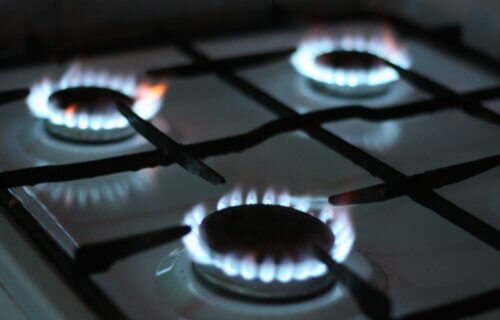BUFFALO, N.Y. — Most people know that exposing an infant or young child to cigarette smoke is a bad idea, but researchers from the University of Buffalo suggest parents may want to adopt the same attitude toward other common household pollutants. More specifically, cooking fuels like natural gas, propane, and wood could be putting kids at risk.
The team at UB reports that exposure to indoor air pollution may lead to delays in early childhood development. Over 4,000 U.S. mother-child pairs were analyzed to reach these conclusions.
“Exposure to unclean cooking fuel and passive smoke during pregnancy and in early life are associated with developmental delays in children,” says Alexandra Grippo, first author of the study, in a university release.
“While cigarette smoke is known to be harmful during pregnancy, cooking fuel may not be viewed the same way,” adds Grippo, who worked on the study while pursuing her master’s in epidemiology at UB’s School of Public Health and Health Professions. “Gas stoves are a main contributor to indoor carbon monoxide and nitrogen dioxide levels, with some families using them multiple times a day. Infants and young children spend more time indoors and are particularly vulnerable to indoor pollutants because they are not fully developed.”
“Clean fuel use” refers to cooking with electricity, such as using a microwave, as well as heating using either electricity or solar power. On the other hand, “unclean fuel use” refers to those who use one or more fuels besides electricity.
While it’s true that gas stoves are already being banned in new buildings all over the country, researchers explain their latest project focused on far more than just natural gas.
“We found that children exposed to any unclean cooking fuel had an increased risk of developmental delays,” explains Kexin Zhu, PhD, a study co-first author who worked on the research as an epidemiology PhD student at UB; Zhu is now a postdoctoral associate in the Rutgers Center for Pharmacoepidemiology and Treatment Science.
The researchers note they were limited by the small number of cases they had to work with, so they were unable to search for associations pertaining to specific fuel types.
“Based on our study, future research with large sample sizes is needed to investigate the relationship between the use of gas stoves and child development,” Zhu notes.

In total, this project included 4,735 mother-child pairs who enrolled between 2008 and 2010 in the Upstate KIDS Study, a large population birth cohort tracking childhood development milestones up until three years of age. Participants self-reported indoor air pollution information during pregnancy and the postnatal period.
The study authors assessed indoor air pollution exposure by collecting information on children’s exposure to cooking fuels, heating fuels, and passive smoking at about four months-old, one year-old, and 36 months-old. Adults were also asked what fuels they usually used to cook with, and if they lived with someone who smokes.
Meanwhile, The Ages and Stages Questionnaire, a parental rating instrument intended to test for children’s development and achievement milestones, helped the team gauge child development across five key developmental domains: communication, gross motor skills, fine motor skills, personal-social, and problem-solving.
According to Lina Mu, PhD, MD, senior author of the study and an associate professor of epidemiology and environmental health in UB’s School of Public Health and Health Professions, this project is the first ever to assess the impact of cooking fuels, heating fuels, and passive smoking on child development across the five developmental domains in the United States.
The study found that unclean cooking fuel exposure from pregnancy to 36 months of age led to increased odds of failing any developmental domain by 28 percent, the gross motor domain by 52 percent, and the personal-social domain by 36 percent. Researchers also note seeing significant associations connecting unclean cooking with failing any domains and specific domains among infants born to young mothers, singletons (pregnancy with one baby), and male infants. However, the same was not seen regarding infants of older mothers, non-singletons, and female infants.
A total of 21.5 percent of women reported exposure to passive smoke during pregnancy, and another 14.2 percent reported actively smoking themselves during pregnancy. Researchers also observed a positive association connecting passive smoke exposure with failing the problem-solving domain in children of non-smoking mothers.
“Passive smoking or secondhand smoking is also an important source of indoor air pollution and should not be ignored,” Zhu comments.
“Passive smoke contains toxicants, such as lead, that can harm children’s development,” she concludes. “We found that passive smoke exposure may increase the likelihood of failing the problem-solving domain among young children of non-smoking mothers. Protecting children from passive smoke is, therefore, important for improving their health and well-being.”
The study is published in the journal Environmental Research.


The article seemed vague. What is “unclean cooking oil”?